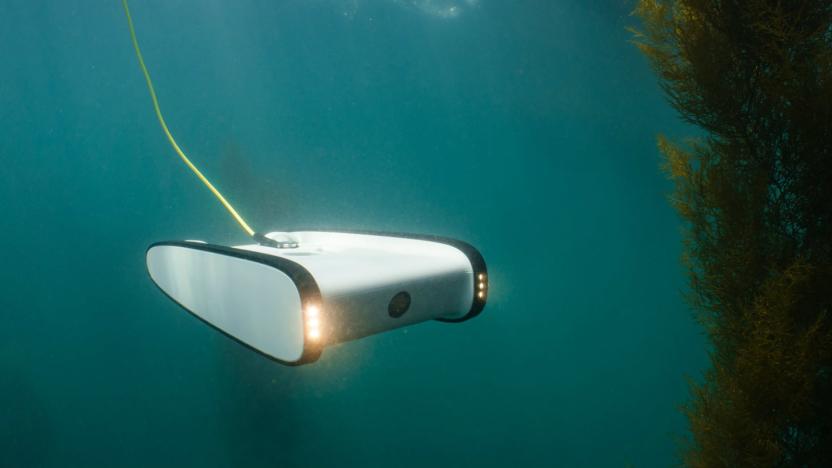openrov
Latest

Nat Geo and OpenROV are giving away 1000 robot submarines
Despite having lived in close proximity to it for hundreds of thousands of years, humanity has yet to explore even a fraction of the Earth's ocean. We have more thoroughly mapped the surfaces of moon and Mars than we have the seafloor. National Geographic and OpenROV hope to change that next year with the Science Exploration Education (SEE) initiative. The organizations are teaming up to give away 1,000 remotely operated underwater drones to any research organization or citizen scientist who wants one (and, obviously, asks while there are still some in stock).

ICYMI: Tour a warzone in VR, champ rock-paper bot and more
#fivemin-widget-blogsmith-image-115849{display:none;} .cke_show_borders #fivemin-widget-blogsmith-image-115849, #postcontentcontainer #fivemin-widget-blogsmith-image-115849{width:570px;display:block;} try{document.getElementById("fivemin-widget-blogsmith-image-115849").style.display="none";}catch(e){}Today on In Case You Missed It: A Syrian news agency is giving viewers a chance to nearly walk the ground of a bombed out city center with a virtual reality tour. Rock, paper, scissors champs would cry themselves to sleep after taking on a Japanese robot that wins the game every time, thanks to high-speed tracking tech. And OpenROV's underwater drone is being heavily funded on Kickstarter, bringing maps of the sea floor to everyone with some spare cash and a penchant for the ocean.

Open source mini sub appeals to our inner Steve Zissou
Quadrocopters haven't exactly opened the skies for DIY exploration so much as they have for acrobatic feats, but the OpenROV project is hoping to make the briny depths friendlier for aspiring explorers and educators alike. The open source rover, spearheaded by NASA engineer and researcher Eric Stackpole, sinks to depths of up to 300 feet (100 meters), runs on eight C-cell batteries for approximately 1.5 hours and can clip by at three feet (one meter) per second. Within the laser-cut acrylic frame, a sealed cylinder houses a BeagleBone, HD webcam and LED lights. This all weighs in at 5.5 pounds and is piloted using a web browser and video feed. The footage is then piped up to a laptop that tethers the vehicle to the shore. Pre-orders for OpenROV 2.3 kits will be taken through Kickstarter later this summer at $750 apiece, though there are plans to sell fully assembled units. For now, explorers can register their interest at the link below and impatient Jacques Cousteaus will be pleased to know that all files necessary to build version 2.2 are available to download now.


